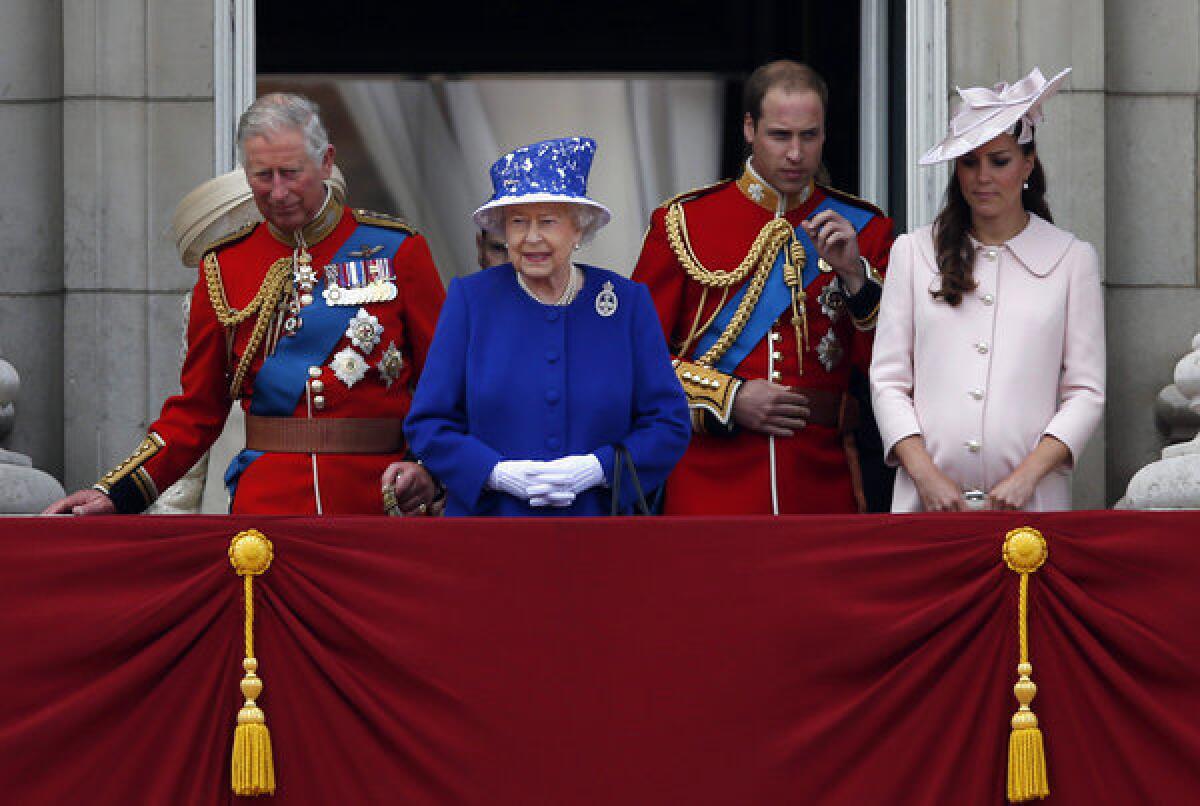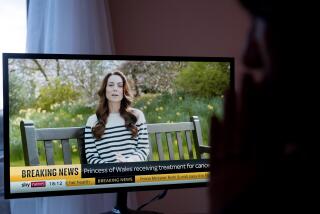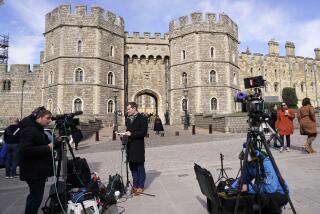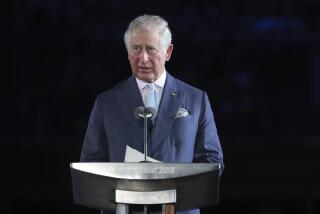Royal baby: 10 tidbits to make you sound like a titled insider

• For the first time in more than 100 years, four generations of present and future British monarchs will be alive at the same time: Queen Elizabeth II, her son and heir apparent, Charles, Prince of Wales; William, the Duke of Cambridge; and the new baby, Prince of Cambridge. Queen Victoria, who died in 1901, posed for a photograph with her son, the Prince of Wales, the future King Edward VII; his son, the Duke of York, the future King George V, and the Duke of York’s eldest son, the future King Edward VIII. (None of them could know it at the time, but there were actually five present and future monarchs alive at the same time. King Edward VIII would abdicate and his brother, “Bertie,” became King George VI, the father of the present queen.)
• The royal means of announcing a birth -- a dignified notice set at the gates of Buckingham Palace -- began with the births of Queen Victoria’s nine children. Back then, the language was august: “The Queen has been safely delivered of a Prince [or a Princess].” When Prince William was born in 1982, the language was more informal: “Her Royal Highness The Princess of Wales was safely delivered of a son at 9:03 p.m. today.” (The baby news will also be posted on the royal website.) The delicacy about the royal reproductive parts was in force when the current queen was born in 1926. She was delivered by Caesarean, but the court announcement said only that “a certain line of treatment was followed.”
• The future head of the Church of England will be baptized in a copy of the christening robe of satin-lined English lace that Queen Victoria had made for her eldest daughter in 1841. The robe was retired in 2004 and the copy, made by order of the queen, was used to baptize her grandson Viscount Severn in 2008. Royal babies are usually baptized in the Lily Font, made by English silversmiths in 1841, again for Queen Victoria’s eldest daughter, and filled with water brought from the River Jordan, where tradition holds that Jesus was baptized.
Quiz: How well do you know Will and Kate?
• This new baby nudges almost all of his royal relatives down the heir ladder. Only his father and grandfather stay in line ahead of his. His uncle, Prince Harry, bumps down a notch, as do all of the queen’s other children and grandchildren. One baby makes the entire royal family play musical chairs.
• How many names the baby has depends in part on how many godparents he has. Little royals born to inherit are tactfully given several diplomatically chosen names. King Edward VIII, known in the family as David, was formally christened Edward Albert Christian George Andrew Patrick David. Prince Charles got off lightly, with Charles Philip Arthur George; his bride, Diana, mixed up his two first names at the altar. The present queen is a fairly simple Elizabeth Alexandra Mary, for her mother, great-grandmother and grandmother. Prince William is William Arthur Philip Louis.
• Baby Cambridge -- as the baby will be known in the hospital -- will probably be breastfed. Queen Elizabeth II breastfed her children, as did Diana, Princess of Wales, but until this century it was considered undignified for a royal lady to breastfeed, so most royal babies had wet nurses -- women who had given birth at about the same time and could breastfeed the royal newborn (their own babies had to wait until the royal highness had had enough to eat). Queen Victoria was shocked that her eldest daughter, Victoria, the mother of the future Kaiser Wilhelm II, enjoyed pregnancy and breastfeeding; the whole process of childbearing, Victoria wrote disapprovingly, is “being like a cow or a dog.”
• The new baby will have as many as five title changes in his lifetime:
1. His Royal Highess Prince yet-to-be-named of Cambridge. His father is both a prince and a royal duke -- far superior to your regular, garden-variety duke -- and he takes his name from daddy’s royal dukedom, much as Prince Andrew, the Duke of York, and Sarah Ferguson’s daughters are Princesses Beatrice and Eugenie of York.
2. His Royal Highness Prince yet-to-be-named of Wales. Once his grandfather Charles, the Prince of Wales, becomes king, it’s likely that King Charles III will have William invested as the Prince of Wales, a title that has been borne by heirs apparent to the throne for centuries. William and Kate will be the Prince and Princess of Wales, and their children will be Prince yet-to-be-named and Princess yet-to-be-named of Wales. Prince Harry now is “Prince Henry of Wales,” for his father’s title. (Prince Charles has been Prince of Wales for more than 40 years, and looks likely to be the oldest man ever to become king. Queen Victoria’s eldest son waited so long to become king that he once told an Anglican archbishop that he was grateful for his Eternal Father but why did he have to have an eternal mother?)
3. Prince yet-to-be-named, period. He is simply the king’s son and heir. It’s a promotion, but a confusing one. In 1936, when King Edward VIII abdicated and his younger brother, the Duke of York, became king, the new king’s younger daughter moped that with her father’s new position, she was no longer Princess Margaret of York but Princess Margaret “of nothing.”
4. The Prince of Wales. His father, King William V, will likely formally invest his first son as his heir when he is old enough by making him the Prince of Wales.
5. King yet-to-be-named. Once William dies, this new baby boy will become king. He will be simply King yet-to-be-named, followed by the number he is – George VII, James III, Henry IX. To the royal household and the government, he will be simply “the King.” There can be more than one queen – say, a widowed queen like the Queen Mother was. But there is only one king at a time. Only he and his wife, the queen consort, can be called “Your Majesty.” It’s a promotion from “Your Royal Highness.”
• Forget that “royals are from an old family” stuff. We’re all from old families. Some families just know more about theirs than others. The baby’s royal line not only clocks in dozens of British monarchs back to when they counted the years with three digits, but thanks to his long-dead great-great grandmother, Queen Mary, she can count among his collateral relations the princes of Transylvania and Wallachia, who include Vlad III, “Vlad the Impaler,” a bloodthirsty real-life ruler who inspired Bram Stoker’s “Dracula.”
• By blood, he is probably the most British monarch since before the Norman conquest in 1066. After that, kings habitually married foreign princesses for several reasons. One, marrying a British “subject” would create jealousy and favoritism at court, with disastrous results. Two, English princes and princesses became engaged to foreign royals to cement peace treaties -- sometimes they were engaged in the cradle, and the engagement got broken off when a better prospect, or a war, came along. Three, kings married to get land as part of the wife’s dowry. Eleanor of Aquitaine brought a big hunk of France to her English husband, King Henry II. Four, royals believed they had to marry their equals, and with only one royal family in England, they had to look across the English Channel for them. By the 18th century, British kings not only were marrying Germans, they were of German origin themselves. Laws banning Roman Catholics from occupying the throne meant Britain had to look to Germany for a Protestant heir. King George I could barely speak English, and King Edward VII, Queen Victoria’s son, spoke English with a slight German accent. World War I wiped out many foreign thrones and therefore much of the foreign royal marriage market, which is why two of King George V’s four sons married English noblewomen. Queen Elizabeth II married Prince Philip, a Danish-German prince born in Greece, but Prince Charles Anglicized the family by marrying Lady Diana Spencer. Their son William has done the same by marrying Catherine Middleton. King George V, Queen Victoria’s grandson, in spite of his numerous German relations, was famously Anglophilic and xenophobic. “I’ve been abroad,” he once exploded. “I didn’t like it.” When the writer H.G. Wells criticized the king and his “alien and uninspiring court,” the king exploded again. “I may be uninspiring, but I’ll be damned if I’m alien.”
• This baby is the second future monarch to be born in a hospital, and is also lucky in this sense: These days, Britain’s home secretary is not required to be there to witness the birth. This tradition supposedly dates to the late 1600s, when the Catholic wife of the secretly Catholic King James II gave birth to a healthy boy. The prospect of yet another Catholic king alarmed Britain’s Protestant leaders, and the rumor went out that the real baby had died and a substitute baby had been smuggled into the queen’s bed in a warming pan -- one of those skillet-like things with a long handle that was filled with live coals to warm rich people’s bedding. It wasn’t true, but it’s called “The Warming-Pan Plot,” and it’s a wonderful tale. And for a very long time indeed, Britain’s home secretary was summoned to be present at royal births to make sure no one pulled a royal switcheroo. This did not mean he was sitting at the foot of the bed. By the time Princess Margaret was born in Scotland in 1930, the poor home secretary, J.R. Clynes, cooled his heels in a corridor outside the room in Glamis Castle, Macbeth’s haunted hangout. This whole business so disgusted Margaret’s father, King George VI, that by the time his grandson Prince Charles was born in 1948, the king threw out that “witness” rule altogether. What’s the point of being king if you can’t issue royal decrees?
[For the record, 3:17 p.m., and 5:57 p.m. July 22: An earlier version of this blog post said George Orwell criticized the King George V and his “alien and uninspiring court.” It was actually H.G. Wells. A previous version of this post also said that the royal baby, were he named Henry, would be Henry VIII. He would actually be Henry IX.]
ALSO:
Photos: William and Kate’s royal wedding
Girl power! The royal baby and history’s what-ifs
The modern/medieval wait for Kate Middleton’s baby
More to Read
A cure for the common opinion
Get thought-provoking perspectives with our weekly newsletter.
You may occasionally receive promotional content from the Los Angeles Times.











